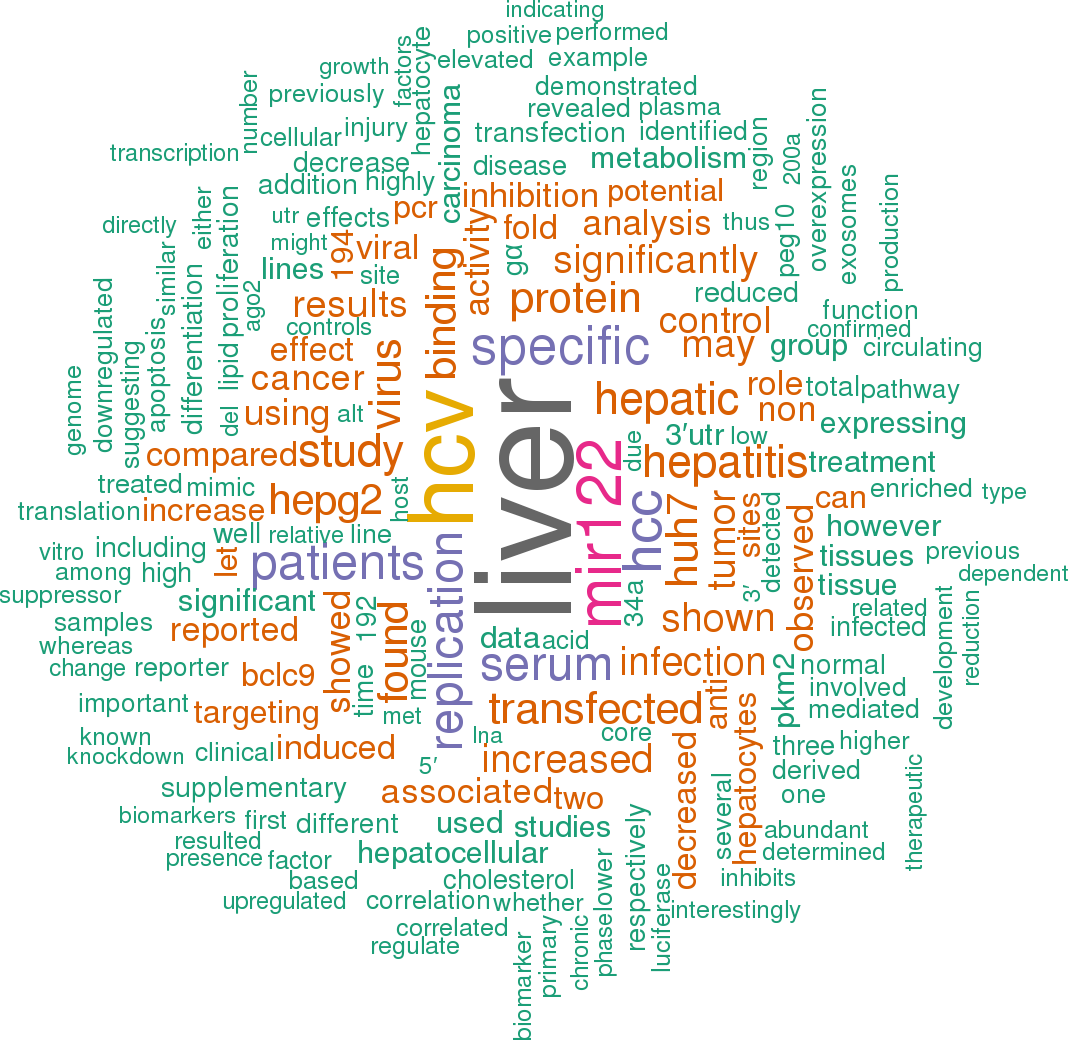Accession
MI0000442
Symbol
HGNC:
MIR122
Description
Homo sapiens
hsa-mir-122 precursor miRNA
Gene family
MIPF0000095;
mir-122
Summary
Caution, this is an AI generated summary based on literature. This may have errors. ?
MIR122 is a liver-specific microRNA that plays a role in various biological processes, including liver metabolism, viral replication, and hepatocellular carcinoma (HCC) development [PMC7352235]. It has been shown that ADAM10 processes surface c-Met and mediates c-Met ecto-domain shedding, and the effects of MIR122 on the release of soluble c-Met were studied [PMC7352235]. MIR122 is involved in the regulation of hepatic gluconeogenesis and lipid metabolism through HNF-4α [PMC4806913]. Reduced MIR122 function leads to promoter methylation and decreased SOCS3 expression, which is not a direct target of MIR122 [PMC3434395]. HAV-RNA replication does not require MIR122 [PMC7165973]. The inhibitory effect of apigenin on HCV replication is possibly explained by decreasing the levels of mature MIR122 through the inhibition of TRBP phosphorylation [PMC5812025]. Incorporating the target sequence for MIR122 in the 3'untranslated region of the E1A gene can reduce virus replication in normal hepatocytes [PMC7281331]. MIR122, miR34a, and miR379 can be used as markers for early detection or monitoring NAFLD development [PMC9738374]. Deprivation of arginine or combination therapy with sorafenib and drugs that enhance MIR122 expression may be useful for managing HCC with reduced MIR122 expression levels [PMC4480756]. The expression levels of molecules including MIR122 were higher or similar to control cells in Vero/MIR122+SRBI+ApoE cells compared to Huh-7.5.1 cells [PMC4916372]. AKT3 absence partially reproduces effects induced by MIR122 expression but is not sufficient to fully reduce tumor size in BCLC9 cells [PMC5342080].
Literature search

562 open access papers mention hsa-mir-122
(3998 sentences)
(3998 sentences)
Sequence
335022
reads,
3777
reads per million, 69 experiments
ccuuagcagagcugUGGAGUGUGACAAUGGUGUUUGugucuaaacuaucaAACGCCAUUAUCACACUAAAUAgcuacugcuaggc
.((((((((((((((..(((((((.(((((((((((............))))))))))).)))))))..)))))).)))))))).
.((((((((((((((..(((((((.(((((((((((............))))))))))).)))))))..)))))).)))))))).
Structure
c - GG C ugucu cuuagcag agcugU AGUGUGA AAUGGUGUUUG a |||||||| |||||| ||||||| ||||||||||| ggaucguc ucgAUA UCACACU UUACCGCAAac a c a AA A uauca
Annotation confidence
High
Do you think this miRNA is real?
Comments
The mature sequence shown here represents the most commonly cloned form from large-scale cloning studies [3].
Genome context
chr18: 58451074-58451158 [+]
Clustered miRNAs
1 other miRNA is < 10 kb from hsa-mir-122
| Name | Accession | Chromosome | Start | End | Strand | Confidence |
|---|
Disease association
hsa-mir-122 is associated with one or more human diseases in the Human microRNA Disease Database
| Disease | Description | Category | PubMed ID |
|---|
Mature hsa-miR-122-5p
| Accession | MIMAT0000421 |
| Description | Homo sapiens hsa-miR-122-5p mature miRNA |
| Sequence | 15 - UGGAGUGUGACAAUGGUGUUUG - 36 |
| Evidence |
experimental
cloned [2-3], Northern [2] |
| Database links |



|
| Predicted targets |



|
Mature hsa-miR-122-3p
| Accession | MIMAT0004590 |
| Description | Homo sapiens hsa-miR-122-3p mature miRNA |
| Sequence | 51 - AACGCCAUUAUCACACUAAAUA - 72 |
| Evidence |
experimental
cloned [3] |
References
|



